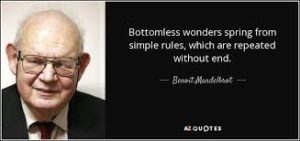When someone gets on a roll telling jokes, sometimes you'll hear one like "Have you heard the one about the Darwin award winner who put a JATO (Jet Assisted Take Off) unit normally attached to solid rockets on his car?" What normally follows is some disturbing story about a lethal lapse in judgment that culminated in the death of some poor fool, apparently so that others might be entertained. Fortunately, more often than not, these stories turn out to be nothing more than myths and urban legends, or plot filler for a movie that nobody watched. Okay, so have you heard the one about the gay college professor recorded by a student, lecturing her class on human sexuality that President Donald Trump was a white supremacist whose election was an act of terrorism and the potential start of a new civil war? The student who taped and released the video has been suspended for the remainder of the semester, ordered to apologize to the professor and write an essay explaining how sharing the video had damaged the students, faculty, and staff of Orange Coast College. Well, okay...but what's the punch line? That her comments were way off topic for a college course on human sexuality? That such a college course even exists in the first place, when the purpose of college is supposed to be acquiring tools and skills that might help the student find a job after graduation? On the other hand, the pornography industry is big business in California, so maybe that's not so crazy. Or was the punch line to ask whether the class was part of the core curriculum or an elective, … [Read more...]
The problem with higher education
According to Matthew W. Hughey, sociology professor at the University of Connecticut, Donald Trump won the recent presidential election because of rampant white supremacy among Americans. In his interview with Tucker Carlson, Professor Hughey claimed that a "huge factor" in Donald Trump's win was because of "a social, political, and economic commitment to white supremacy", which he somewhat redundantly defined as "a social, political, and economic commitment to the promotion of people who pass as white." To be fair, Professor Hughey sounds quite intelligent. He casually throws around phrases and words such as "gender dynamics" and "heteronormativity" while attempting to justify his claims that white supremacy played a significant role in the recent election, reminding me of something my late father used to say: if you can't dazzle them with brilliance, baffle them with B.S. Naturally, Dad used the more colorful word in lieu of the abbreviation. Carlson pointed out one of the more obvious flaws in Hughey's claim. He cited the statistical fact that during the last 50 years, 60 million immigrants have settled in the United States. Only 12 percent of those immigrants came from "white" European countries. And Professor Hughey's response was: "your point makes sense if you don't think about it." That seemed both evasive and unnecessarily rude. Hughey went on to explain that he believes what is happening today is no different than forced immigration and slavery. Now personally believing something so preposterous is one thing, but please remember that … [Read more...]
Computers versus bee brains
The Holy Grail for computer programming in terms of developing artificial intelligence is known as neural networking, which strives to program computers to mimic the capabilities of the human brain. This always struck me as a lofty but probably an unrealistic goal, to say the least. A more realistic aspiration might be to develop computer software that successfully emulates the capability of a bee's brain, which has only a handful of neurons and a brain mass approximately the size of a pinhead. Yet bees somehow effortlessly manage to solve problems humans consider to be incredibly difficult and complex. Are you familiar with "The Traveling Salesman Problem?" Basically, it goes like this: Given a list of cities and the distances between each pair of cities, what is the shortest possible route that visits each city exactly once and returns to the origin city? Consider this story found in the UK Daily Mail: "Bees' tiny brains able to beat computer at complex mathematical problems," the headline reads. Brutal! For those critical minds prone to "shoot the messenger" by challenging the source, please note that CBS News relied on different experts to reach the same conclusion -- bees are a lot more intelligent than one might naturally assume, given the size of their brain. To be fair (to the inanimate object) the computer cannot be blamed for struggling to calculate the best way to do what a bee does every day, because humans programmed the code for the computer, and humans are, well, human. We make mistakes. Lots of them. The creator of bees … [Read more...]
Fibonacci’s spirals
Mathematician Arthur Benjamin said, "Mathematics is the science of patterns, and we study it to learn how to think logically, critically, and creatively." Not only do patterns exist in nature, they are clearly ubiquitous. Mandelbrot's fractals (often called the thumbprint of God) are but one example of a mathematical pattern repeated on a scale ranging from the micro world to the cosmos. Another extraordinary pattern is known as the Fibonacci sequence, which graphically translates into Fibonacci's spirals (often referred to as the fingerprints of God.) Leonardo Bonacci (a.k.a. Leonardo of Pisa and Fibonacci) was an Italian mathematician most famous for his discovery of what has been called the "golden sequence" of numbers. The famous Fibonacci sequence is simply the following, repeated to infinity. The next number in the sequence is always the sum of the previous two numbers: 0, 1, 1, 2, 3, 5, 8, 13, 21, 34, 55, 89, 144, 233, 377, 610, 987, 1597, 2584, 4181... This reasonably short video demonstrates how the pattern can be found everywhere from DNA to clouds in the sky. This slightly longer documentary claims to find the golden sequence everywhere in nature, art, music, and even the Mandelbrot set. Of course, not everyone agrees with mathematicians who claim the Fibonacci sequence can be found in virtually everything in the universe. For example, physicist Donald Simanek offers harsh criticism of Fibonacci on a page at his website called the "Fibonacci Flim-Flam." Professor Simanek described people (like me) who found the pro-Fibonacci video interesting as … [Read more...]
Mandelbrot’s fractals
Patterns are models, or plans, used to produce nearly perfect copies of a specific design. In fact, the ability to discern a pattern from raw data is usually considered an indicator of advanced intelligence. Some scientists (who happen to be avowed atheists, and curiously not agnostic) will argue that when words like "models", "plans", and "design" are used to describe an organic, natural process, those words don't mean what they would ordinarily mean. These experts also claim the appearance of design in a living organism is nothing more than an overwhelmingly convincing optical illusion. In his book The Greatest Show on Earth: The Evidence for Evolution, biologist (and renowned atheist) Richard Dawkins wrote, Perhaps it was religious indoctrination that held us back (from believing in evolution). Or perhaps it was the daunting complexity of a living organ such as an eye, freighted as it is with the beguiling illusion of design by a master engineer. Why does Mr. Dawkins believe that our eyes have deceived us, and the intuitively obvious appearance of design in our bodies only an illusion? It's because he perceives design flaws in the human eye, probably due to the fact that the photoreceptor cells in the retina are allegedly placed backward. Dawkins has also been quite adamant about his belief that the vas deferens tube in humans and the laryngeal nerve in a giraffe are also examples of "poor" design which, as this website suggests, commits the logical fallacy of personal incredulity. This argument of Dawkins depends upon our making the assumption … [Read more...]





